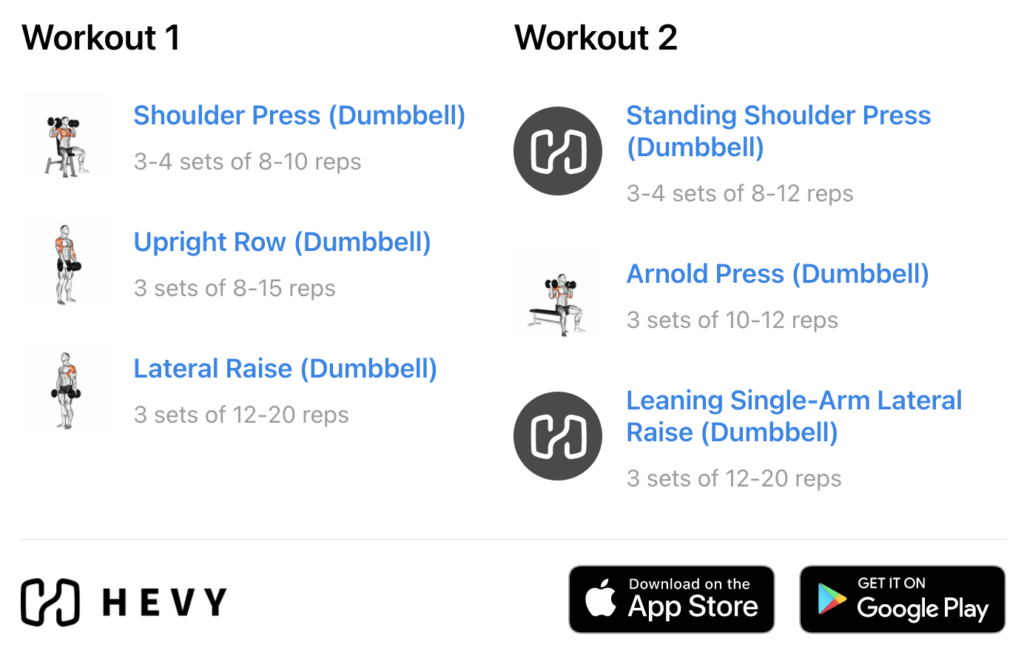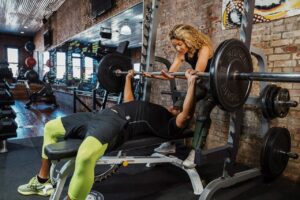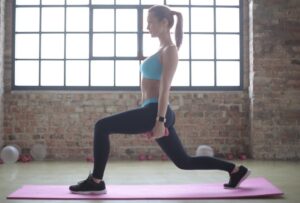Dumbbell Shoulder Workout Introduction
The shoulder joint is among the most fascinating in the entire body. It offers a complete range of movement, which allows us to move our arms to the side, front, back, and over the head. And the shoulder muscles? They are equally as fascinating.
Our shoulders, also known as deltoids, are three-headed muscles. We have the front (anterior), side (lateral), and rear (posterior) deltoid heads, each with its unique functions (1). Together, these muscles allow us to press heavy objects above our heads and carry out all sorts of simple activities, which we take for granted. For example, reaching to grab something over your head is possible because of the shoulders. If you’ve ever had an achy shoulder, you probably realized just how often you need to use them in your everyday life.
The most notable benefit of training our shoulders is that we become more functional and accessible in everyday activities. For example, manual labor (such as working on a car, gardening, or something similar) is much easier with solid shoulders. Another benefit is that we become more athletic and better able to throw, lift heavy weights, and carry objects. Plus, by strengthening the shoulder muscles, we allow them to keep the incredibly mobile joint safe and healthy.
Dumbbells are an excellent choice as an exercise tool because they allow us to train our shoulders in various ways. They also allow us to focus on one deltoid at a time, adjusting the load based on our strength level.
Try Hevy to create your own routines and track your progress.
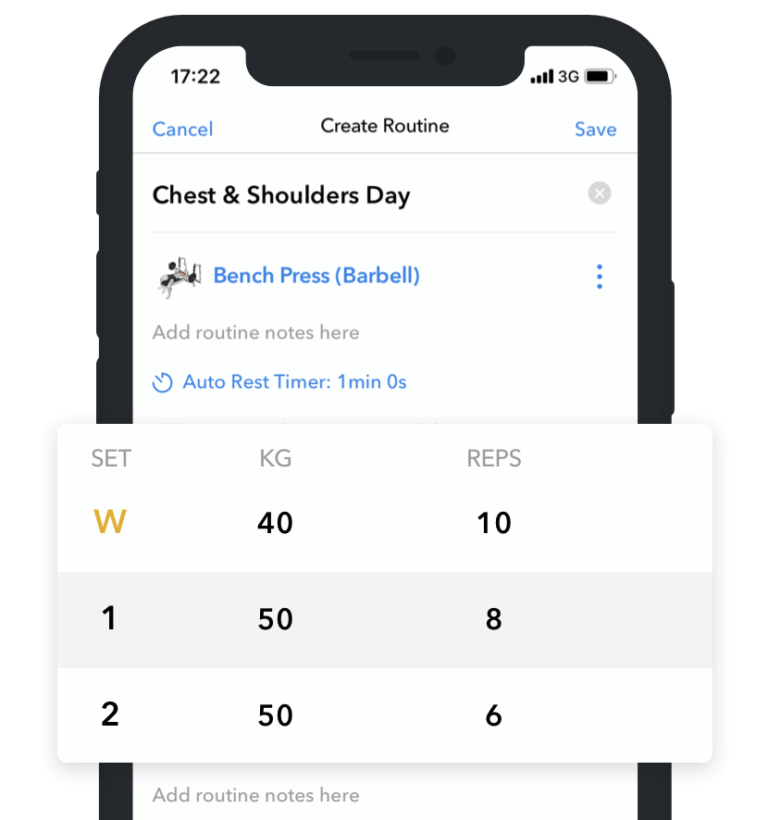
Hevy – Workout Tracker





Hevy – Workout Tracker
Create your own dumbbell shoulder workout with Hevy, and track your progress – for free
8 Best Dumbbell Shoulder Exercises
Exercise 1: Seated Shoulder Press
The seated press is an effective movement for building up your shoulder strength (2).
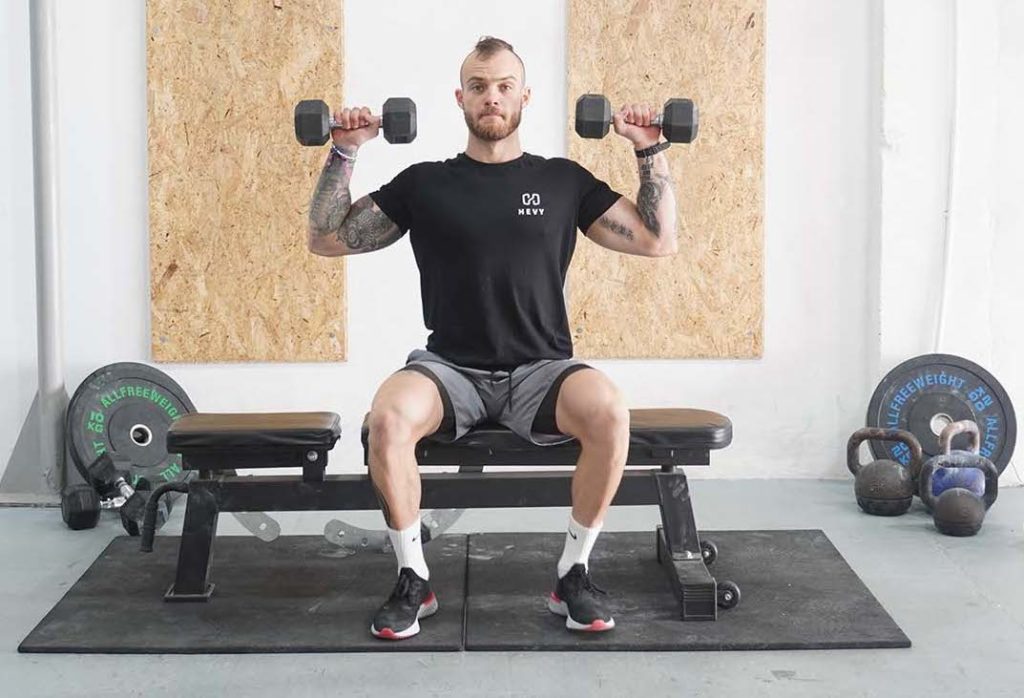

Muscle groups: Shoulders, Triceps, Upper Chest, Serratus Anterior, and Abs
Equipment: Pair of Dumbbells and Gym Bench
Step by Step Instructions:
- Set the back support in an upright position, grab a pair of dumbbells, and sit down.
- Rest the dumbbells on top of your thighs.
- In one motion, thrust both dumbbells up and position them to your sides with your elbows bent. Your elbows should be slightly lower than your shoulders.
- Bring your chest out, engage your abs, and take a breath.
- Press both dumbbells up and in, bringing them together at the top.
- Lower the weights to the starting position, and exhale on the way down.
Exercise 2: Standing Shoulder Press
The standing press is also helpful for shoulder development. Due to the more significant stability requirements, you get to engage your deltoids even better (2).


Muscle groups: Shoulders, Triceps, Upper Chest, Serratus Anterior, Back, and Abs
Equipment: Pair of Dumbbells
Step by Step Instructions:
- Grab a pair of dumbbells and stand tall.
- In one motion, thrust both dumbbells up and position them to your sides with your elbows bent and slightly lower than your shoulders.
- Stick your chest out, engage your abs, and squeeze your glutes.
- Take a breath and press both dumbbells up and in, meeting them at the top.
- Gradually lower them back to your sides as you exhale.
Note: Due to the higher stability requirements, you might want to start with a pair of lighter dumbbells to get a good feel for the exercise.
Exercise 3: Lateral Raises
Lateral raises are a fantastic movement for isolating your shoulder and emphasizing the middle (lateral) head (3). Regularly doing these exercises will make the shoulder muscle look rounded (or capped).
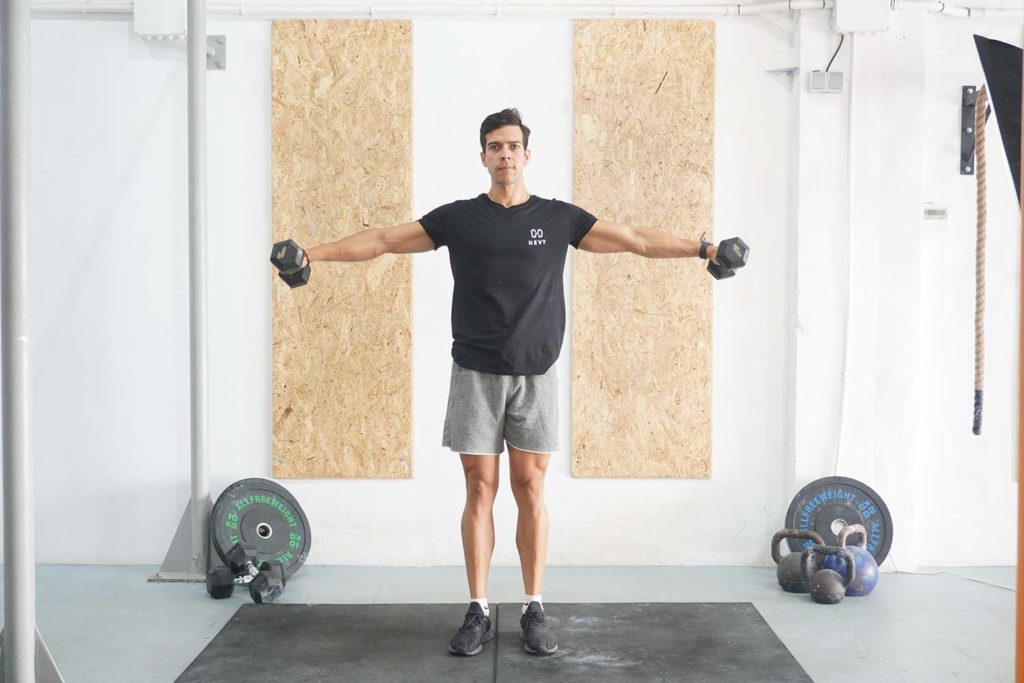

Muscle groups: Shoulders (mostly the middle portion)
Equipment: Pair of Dumbbells
Step by Step Instructions:
- Grab a pair of light dumbbells and stand tall.
- Have your arms to your sides with palms facing your thighs.
- Take your chest out, engage your abs, and take a breath.
- While keeping your elbows almost entirely straight, raise both dumbbells to your sides.
- Lift the weights until your elbows are at shoulder level, and hold the top position for a moment.
- Slowly release the dumbbells back to your sides, controlling them on the way down and exhale.
Note: You can do these standing or seated – whichever you prefer. Doing lateral raises from a seated position might be more beneficial if you’re prone to swinging and using momentum.
Exercise 4: Front Raises
Front raises are another solid isolation exercise for the shoulder. Because of the unique motion, front raises primarily emphasize the front deltoid heads and involve your pectorals to a small degree (3).
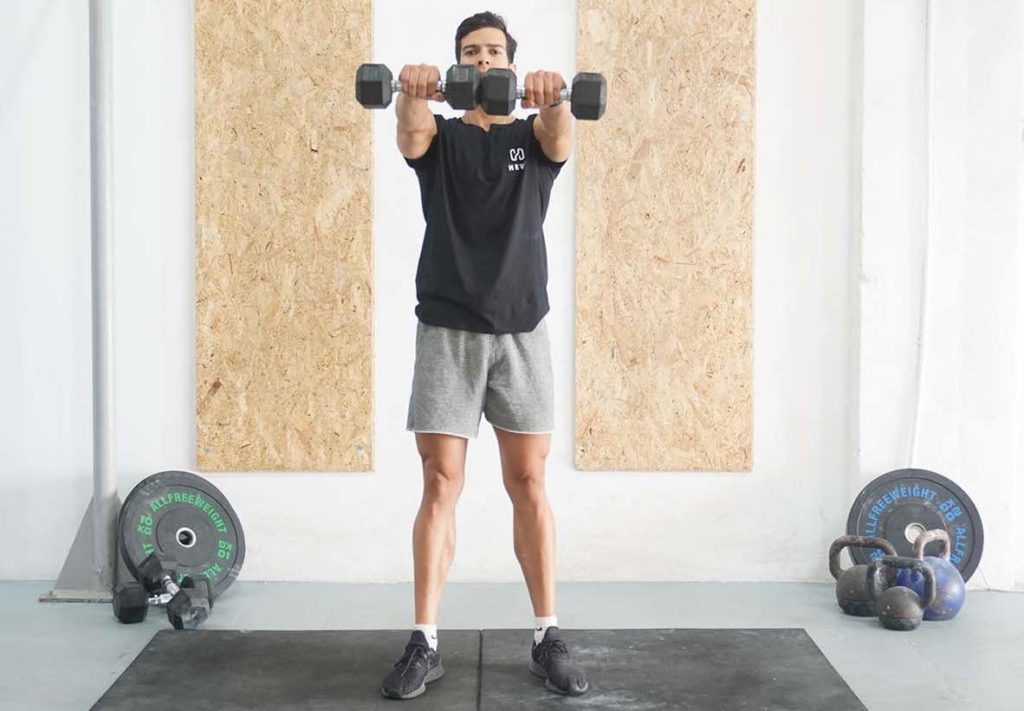

Muscle groups: Shoulders (mainly the front deltoids) and Chest
Equipment: Pair of Dumbbells
Step by Step Instructions:
- Grab a pair of dumbbells and position them in front of your thighs with your arms straight and palms facing back.
- Stand tall, bring your chest out, and take a breath.
- In one motion, raise both dumbbells forward and up until your arms are horizontal and parallel to the floor.
- Hold the top position for a moment and gradually lower the weights to the starting position, exhaling on the way down.
Exercise 5: Bent-Over Reverse Flyes
The reverse fly is among the best isolation exercises for the posterior shoulder heads, especially when no other equipment is available (4).
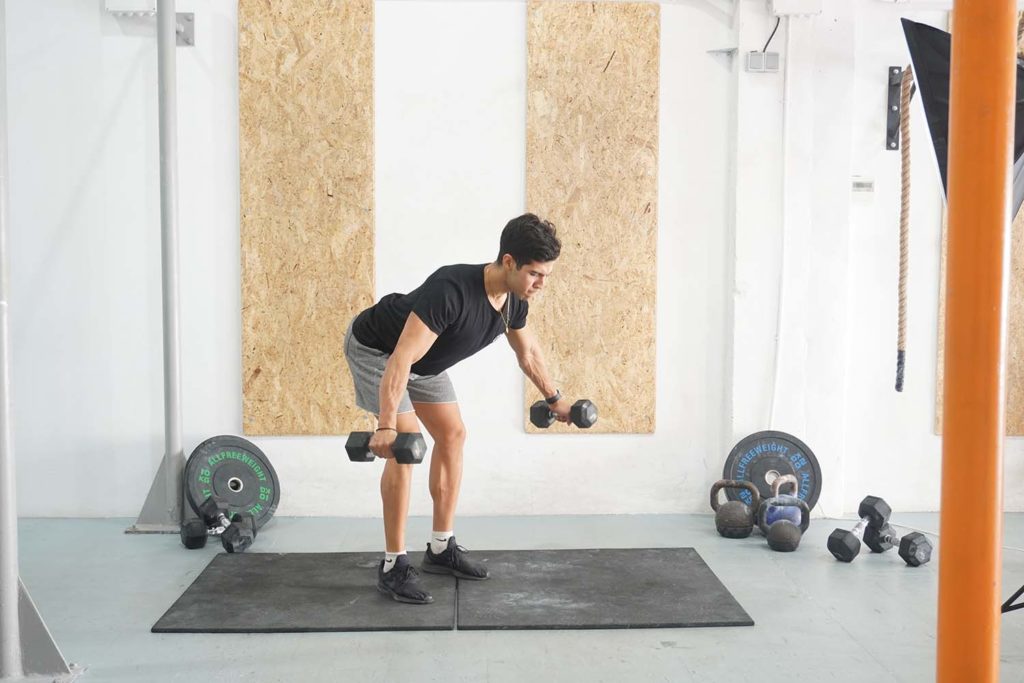

Muscle groups: Shoulders (mostly the posterior deltoids) and Upper Back
Equipment: Pair of Dumbbells
Step by Step Instructions:
- Grab a pair of light dumbbells and bend your torso forward by hinging at the hips. Make sure your back stays in a neutral position.
- With a weight in each hand, allow your hands to hang straight down and have your palms face one another. Bend your elbows slightly.
- Bring your shoulders back, engage your abs, and take a breath.
- In one motion, raise both dumbbells to the sides and back until the weights are at torso level and you feel your upper back and shoulders working.
- Hold the contraction for a moment and gradually lower the weights to the starting position as you exhale.
Note: Many people overestimate their ability on this exercise and typically lift the same dumbbells they use for exercises like lateral raises. It’s best to start with a pair of lighter dumbbells. Train with a full range of motion and focus on activating the correct muscles.
Exercise 6: Upright Rows
The upright row is a fantastic movement for overloading your shoulders with more weight and training them through an extended range of motion (5).
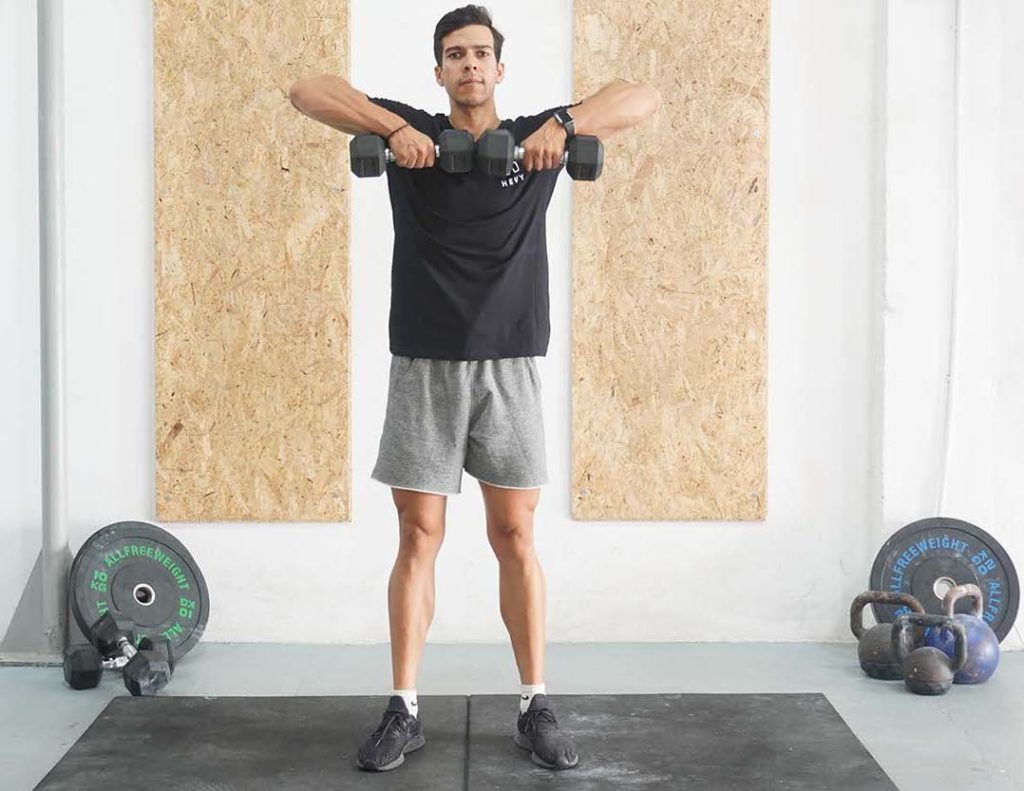

Muscle groups: Shoulders, Biceps, Chest, Serratus Anterior, Upper Back, Traps, and Abs
Equipment: Pair of Dumbbells
Step by Step Instructions:
- Grab a pair of dumbbells and position them in front of your thighs with your arms straight and palms facing back.
- Have your feet hip-width apart with toes pointed slightly out.
- Bring your chest out, engage your abs, and take a breath.
- Row both dumbbells in a straight vertical line toward your chest.
- Lift the weights as much as your strength and shoulder mobility allow and hold the top position for a moment. You should feel the tension in your shoulders and traps.
- Lower both weights to the starting position, exhaling on the way down.
Exercise 7: Seated Arnold Press
As an exercise from Schwarzenegger himself, you know it’s good (and challenging). Thanks to the unique motion, the Arnold press reinforces shoulder stability and trains all three heads of the muscle group.
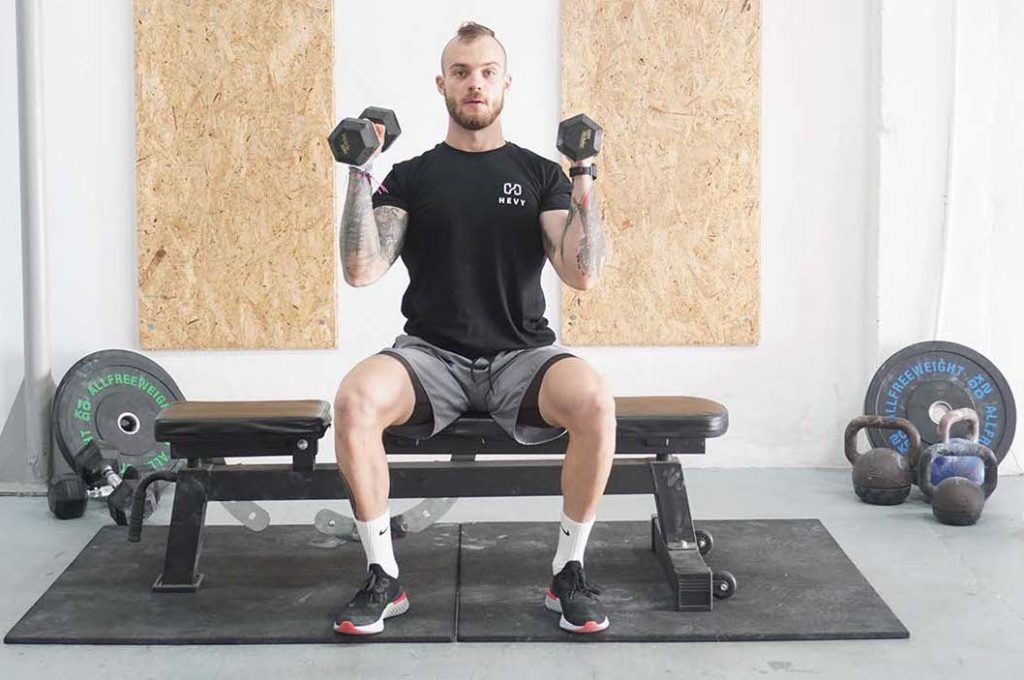

Muscle groups: Shoulders, Triceps, Upper Chest, Biceps, Serratus Anterior, and Abs
Equipment: Pair of Dumbbells
Step by Step Instructions:
- Set the back support of a gym bench in an upright position.
- Grab a pair of dumbbells and sit down. Position your back against the support and rest the weights on top of your thighs.
- Raise both dumbbells in front of your chest one at a time. Your elbows should be bent with your wrists facing your torso. Your biceps will keep the weight in position, similar to the top of a bicep curl.
- Engage your abs and take a breath.
- Begin the first repetition by pressing both dumbbells up as you simultaneously rotate your wrists out.
- As you’re halfway up, spread your elbows to your sides and make sure your wrists are now facing forward.
- Press up until your elbows are locked out and begin the descent.
- Lower the weight through the same movement pattern, gradually bringing your elbows in as you rotate your wrists in.
Exercise 8: Leaning Single-Arm Lateral Raise
The leaning lateral raise is a neat variation of the classic movement. By leaning your body to the side, you slightly increase the range of motion, making the exercise more challenging and effective for developing your middle deltoids.
Muscle groups: Shoulders (mostly the middle portion)
Equipment: a Dumbbell and something to hold onto
Step by Step Instructions:
- Grab a dumbbell and stand next to something you can hold onto for balance – for example, the side of a squat rack.
- Hold the squat rack with your free hand as you extend your arm and place your feet right next to it. In doing so, your body will naturally lean to the side.
- With the dumbbell in your other hand, straighten your elbow and bring your shoulders back.
- Take a breath and raise the dumbbell to the side until it’s at shoulder level.
- Hold the top position for a moment and slowly release the weight until your arm hangs straight down. Exhale on your way down.
- Once finished, rotate your body 180 degrees, support yourself with the opposite arm, and do the same number of repetitions for your other side.
Shoulder Dumbbell Workouts
Workout 1:
Routine 1 is an example of a simple shoulder dumbbell workout that takes advantage of three unique movement patterns. Instead of solely relying on pressing movements, we have a rowing variation that better emphasizes our middle deltoids, biceps, and trapezius. We also have an isolation movement for the middle deltoid. Together, the three actions offer impressive shoulder development and progressive tension overload.
- Seated Shoulder Press – 3-4 sets of 8 to 10 reps
- Upright Rows – 3 sets of 8 to 15 reps
- Lateral Raises – 3 sets of 12 to 20 reps
Workout 2:
This workout is also simple but slightly different from the one we saw above. Specifically, we now have a standing overhead press, which is excellent for building up shoulder strength and involving our core muscles more. We also have the Arnold press, which emphasizes all three portions of the shoulders. We have a slightly more challenging lateral raise variation, which forces the middle deltoid to work harder and through a slightly extended range of motion.
- Standing Shoulder Press – 3-4 sets of 8 to 12 reps
- Seated Arnold Press – 3 sets of 10 to 12 reps
- Leaning Single-Arm Lateral Raise – 3 sets of 12 to 20 reps
Learn more dumbbell workouts:
Legs
Chest
Full Body
Conclusion
Our shoulders are relatively small, but understanding and training them correctly still takes effort and focus. Here are some key points from this guide:
- Because of their unique position around the shoulder joint, our deltoids are involved in a wide range of movements (1)
- The front, middle, and rear deltoid heads have unique roles and often work together to produce specific movements and keep the shoulder joint stable.
- Dumbbells are an excellent piece of equipment for training the shoulders because we can pick from various movements, overload our muscles well, and focus on one side at a time.
If you’re looking for a fun and challenging way to develop your shoulders, consider the above ten exercises and take inspiration from the two workouts we shared. Create your own shoulder routine with Hevy- Workout Tracker.





Hevy – Workout Tracker





Hevy – Workout Tracker
Create your own dumbbell shoulder workout with Hevy, and track your progress – for free
Frequently asked questions
How often should I do a shoulder workout?
Training volume – the number of sets and reps we do – primarily determines our outcomes (6). So, your training frequency should mainly depend on how much work you do inside each workout. But, in general, you should train your shoulders twice per week – for example, on Monday and Thursday.
What is the best dumbbell exercise to activate the shoulders?
There is no single best exercise for activating your shoulders. Many activities can activate your shoulders well, so long as you use the proper weights and focus on having your shoulders do all the work.
I don’t have dumbbells! What can I use instead?
You can use different pieces of equipment, depending on the specific exercise. Water jugs typically work well for movements like lateral raises. You can also substitute some activities for bodyweight exercises – for example, instead of doing overhead presses, perform pike push-ups. Research also finds resistance bands or cable machines to be viable alternatives (4).
